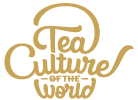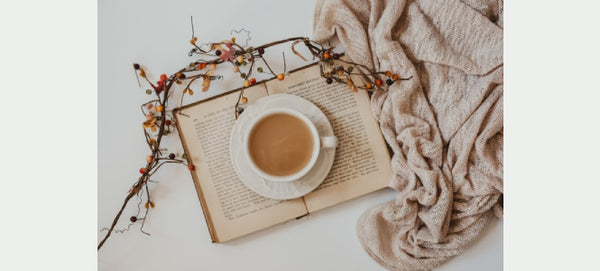It’s Time For Fascinating Tea Facts
Curiosity is man’s second nature. It is how Isaac Newton made sense of gravity. If it wasn’t for a keen interest in the workings of the world as we know it, evolution would be a distant dream. Even while watching curiosity-inducing films, we find ourselves at the edge of the seat, biting our nails in anticipation. So, why hold back when it comes to the beloved tea; why not feed our curiosity when it comes to brews that heal us through and through? Here are some of the fascinating tea facts and the must-know information about tea that will only make you fall more in love with it-
6 Interesting Tea Facts
If tea is what gets you going every morning, and the one thing you want to come home to every evening, this blog is for you. Get to know your cup of tea a little better, to enjoy it a lot more-
1. The Accidental Origin:
One of the very first facts about tea has to be how it came to be! Emperor Shen Nung, described as the father of agriculture in Chinese mythology, is believed to have discovered green tea in 2737 BC (5000 years ago). According to legend, as he rested with his entourage outdoors, a few leaves from a wild tree wafted into his pot of boiling water. Not noticing the change in colour, he sipped the intriguing brew and was enchanted by its delicate flavour and refreshing effect.
2. Make Way For Varieties:
Different tea blends bring you different flavours, in abundance. Here are the primary types of true teas, categorized according to their characteristics and processing-
Green Tea - The Healthier One:
These tea leaves do not undergo the oxidation process. The leaves, after being plucked, are allowed to wither for a few hours. They are then steamed or panned to remove the moisture and trap the antioxidants within the leaves.
White Tea - The Rare One:
When it comes to exotic white teas, the young fine shoots are hand-picked at the beginning of the season with the fine silver doves still attached to it. The complex light flavoured tea leaves come from Fujian province in China, Darjeeling in India and some parts of Sri Lanka.
Black Tea - The Popular One:
After being plucked, the leaves are exposed to hot air for hours. They are then rolled to allow the oils to spread. The leaves are then passed through a screen; the smallest ones go to the next stage where they are dried. And voila, you get a full-bodied, energising tea!
Oolong Tea - The Earthy One:
The tea leaves, which may be oxidized from 20% to 80%, are repeatedly rubbed to generate the correct texture and flavour. From soft floral flavours to nutty, toasty flavours, Oolong tea flavours vary depending upon the level of oxidation.
3. The Warmth Of Wellness:
The must-have information on tea is about how it caters to our well-being. A cup of tea can ensure higher metabolism, stronger immunity, and can revive your spirit! Green tea is popular as a healthy weight loss aid. Black tea makes for the ideal alternative for coffee. Oolong tea keeps your heart health in check. Each type of tea brings its own treasure trove of benefits for your mind, body and soul.
4. Tea For Beauty:
Yes, teas contribute greatly to good health in terms of skin and hair as well! The antioxidant known as EGCG present in most teas can slow down the signs of aging, giving you a youthful glow. They can also bring you the gift of long, lustrous hair cascading down your shoulders. The anti-inflammatory properties of green tea make it an effective treatment for those who suffer from Rosacea and acne. Caffeine and tannins help shrink blood vessels around the eyes, thereby treating puffy eyes and dark circles.
5. Tisane Tea Are Not True Teas:
Unlike the other popular tea types, Tisane teas are not a product of the Camellia Sinensis plant. These are blends born out of leaves, bark, roots, berries, seeds, spices, mint, chamomile, verbena, and rooibos. These incredibly healthy ingredients are the reason why Tisanes are also called Herbal teas.
6. The Champagne Of Teas:
There is a fascinating reason why Darjeeling tea is considered as the ‘Champagne of teas’. Genuine Darjeeling tea is grown in India in a very small area at the foot of the Himalayas; an area that is less than 70 square miles large. Its rarity is why Darjeeling is highly prized, and is awarded with the title of Champagne!
Bonus Tea Facts - Straight From Guinness World Records
Dainik Bhaskar, along with the city of Indore in India, set the record for the largest tea party with 32,681 participants in attendance. (As of year 2020)
Discovered by the Shaanxi Provincial Institute of Archaeology during the excavation of the Han Yang Ling Museum in China, tea leaves were found dating back over 2,100 years.
The largest cup of tea is 5,000 litres (1,320.86 gallons) and was achieved by Global Village Dubai (UAE) in Dubai, UAE, on 25 January 2018. The cup is 3.66 m high and 1.42 m in diameter.
Why Buy Premium Tea Blends from Tea Culture of the World?
We delight tea connoisseurs with our signature blends of over 80 exquisite herbal and flavoured teas. The exceptional botanical ingredients are sourced from all over the world - as far and wide as Japan, China, Vietnam, South Africa, Argentina, and India; fruits and herbs from Europe; flowers from Egypt. All ingredients are freeze dried. This retains the nutritional value, flavor and texture helping us to create the best quality blends all year through.
Our tea bags are designed keeping nature’s well-being in mind as well. We use Soilon because it’s 100% biodegradable. Made from a lactic acid extracted from corn starch, it is easily decomposable, and suitable for composting. Which means, zero contribution to plastic pollution in the form of microplastics (found in regular pyramid tea bags). Our tea bags are glue, resin and staple-free.


